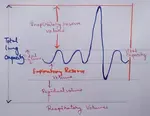Tsunami
Tsunami is a Japanese word. It means the super waves of the sea. It is a natural disaster. It causes a great impact on the lives of human beings. Tsunami affects the port area the most it causes a devastating damage to the coastal areas. The synonym of tsunami is tidal wave. It has another name and it is called seismic sea wave. It is a series of tidal waves in a water body causes through natural calamity. The main cause of tsunami is the displacement of a large volume of water. Generally it happens in sea water or in a large lake. There are so many stimulants which instigates the natural disaster tsunami. These Are – earthquakes, volcanic eruptions and other underwater explosions, landslides, glacier calving, meteorite impacts and also other disturbances above or below the water etc. These tides are generated by the gravitational pull of the moon and the sun. A tsunami is actually generated by the displacement of water.
Tsunami waves are different from normal under sea currents or sea waves. It is because their over length is far longer. Tsunami is not like natural sea waves. It is totally different from them.
`Tsunami’, a Japanese word also means harbour wave. Tsunami is a rapidly rising tide .For that it is called tidal wave. The scientific society would not consider it. They thought it’s a myth. According to them it probably gives a false impression about the relationship between tides and tsunamis. The general matter about tsunami is that it has several series of waves. It ranges from minute to hours. It arrives in a sequence so it is called internal wave train. These wave heights of tens of meters can be stimulated by large events.
The impact of tsunami is limited to coastal areas but they have an enormous destructive power. This can affect the entire area of ocean basins.
The 2004 Indian Ocean tsunami was deadliest among the all natural disasters in human history. The effect of this tsunami was- at least 230,000 people killed or missing. This incident was happened in 14 countries bordering the Indian Ocean.
According to the suggestion of ancient Greek historian Thucydides tsunamis were related to submarine earthquakes. It was a mystery to men till 20th century .It was much unknown to human kind. He recorded it in his book History of the Peloponnesian War. This book was written in 5th century BC. Major areas of current research is about to determine why some large earthquakes is about to determine why some large earthquakes do not generate tsunamis while a smaller one can affect it. After taking accurate for casting the passage of tsunamis across the oceans and for casting how tsunami waves interact with shorelines the scientists judged and made that doctrine.
It slows down when the wave enters the shallow water. It increases its amplitude. The wave again slows and amplifies. It is showed that only the largest waves crest.
The cause of tsunami is mainly two of mechanisms. The one is the smashing force of a wall of water travelling at high speed and the destructive power of a large volume of water draining off the land and carrying a large amount of debris in it.
The tsunami is a natural disaster or calamity. So there is no point to add in conclusion as pre-caution. Only what can we do, we should be more human while treating the affected people. Our government has a disaster management section which should be more active in their works. Remember one thing man is important and never the money.
Recent Articles
-
Regulation of Respiration | Respiratory Centres | Inspiratory Area |
Oct 14, 25 12:13 AM
Respiratory Centre is the area that controls the rate of respiration and it is observed to be located in medulla oblongata and pons. Respiratory Centre has the following will dispersed components like… -
Explain Transport of Gases | External Respiration | Tissue Respiration
Oct 09, 25 11:35 PM
In humans gaseous exchange is completed in the following ways the steps are - External Respiration or Breathing - Breathing in false taking in of Oxygen and giving out of carbon dioxide in the body. M… -
Kind and Number of Teeth | Location of Teeth in Mouth | Care of Teeth
Sep 11, 25 12:52 AM
Kind and Number of Teeth -
The Gaseous Exchange | Transport of Oxygen | Haldane Effect |
Sep 10, 25 02:44 PM
Oxygen carrying capacity of blood is 20 ml for 100m but 3% of dissolved in plasma and 97% of the oxygen combines with haemoglobin to form a loose reversible Complex called oxyhaemoglobin and is transp… -
Respiratory Volumes and Capacities | Tidal Volume | Dead Space
Sep 10, 25 02:46 AM
Explain respiratory volumes and capacities: Tidal Volume - Tidal volume is the volume of air inspired or expired in relaxed or resting position. Amount of tidal volume is about 500 m and it consists o…






New! Comments
Have your say about what you just read! Leave me a comment in the box below.